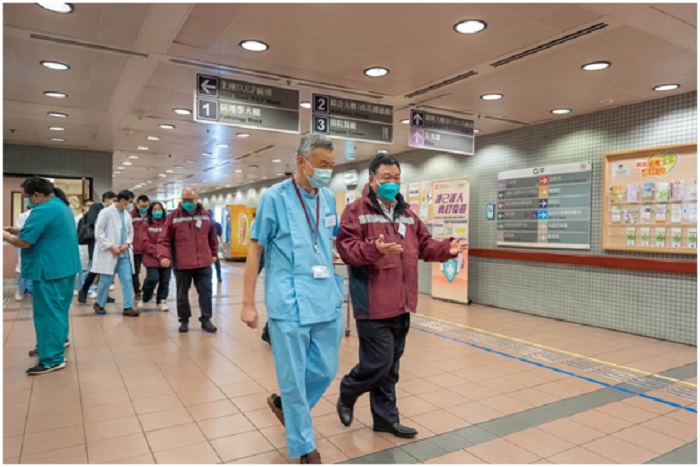



The fifth wave of COVID-19 infections in China’s Hong Kong Special Administrative Region (HKSAR) is still rampaging through the region, posing serious health risks to citizens.
Although the epidemic situation is severe, Hong Kong must adhere to anti-pandemic principles and remain calm and confident, said Carrie Lam, chief executive of the HKSAR, adding that Hong Kong’s confidence in prevailing over COVID-19 derives from the country’s robust support and the HKSAR government’s strategy to combat the epidemic with strict prevention and control.
On Feb. 22, the construction of four temporary community isolation and treatment facilities, or mobile cabin hospitals, kicked off in Hong Kong with the assistance of construction teams from the Chinese mainland.
After going into operation, these makeshift hospitals at Tsing Yi, San Tin, Yuen Long and Hung Shui Kiu will add 14,000 or 17,000 isolation units for Hong Kong.
Earlier on Feb. 19, China State Construction International Holdings Limited, a subsidiary of China’s centrally-administered state-owned enterprise, China State Construction Engineering Corporation, started the construction of two permanent community isolation and treatment facilities. The facilities, both designed and built by China State Construction International Holdings Limited, will provide about 9,500 quarantine units upon completion.
On Feb. 16, the second set of equipment for a nucleic acid test laboratory named Huoyan, or Fire Eye, and the seventh batch of Sinovac COVID-19 vaccines with approximately 1.25 million doses provided by Huasheng Diagnostic Center under Chinese biotech company BGI Group, arrived in Hong Kong; the next day, the first panel of epidemiology experts from the Chinese mainland, along with two mobile nucleic acid testing vehicles, reached Hong Kong to support the region with virus origin tracing, epidemic situation analysis and risk assessment.
Supplies of fresh vegetables, meat and other daily necessities have been fully guaranteed. The first batch of freezers filled with chilled poultry products shipped by Sinotrans Guangdong Huangpu Warehouse & Terminal Co., Ltd. arrived in Hong Kong on Feb. 17. These products were quickly distributed to markets across Hong Kong and provided for a great number of families.
Non-profit organization Fosun Foundation (Shanghai) recently announced that it would donate 10 million HKD ($1.28 million) worth of anti-epidemic materials to Hong Kong, including rapid COVID-19 antigen test kits and medical masks, to support the region’s response to the latest outbreak.
Zhong Nanshan, an academician of the Chinese Academy of Engineering and a renowned respiratory disease expert, filmed an 11-minute video in Cantonese, the primary language in Hong Kong, on Feb. 21 to cheer on Hong Kong residents who are battling with the pandemic.
“In human beings’ fight against the virus, what matters most are people’s lives. People’s health is the most important human right,” Zhong stressed.
“Unlike some Western countries, the Chinese mainland and Hong Kong uphold the principle of ‘putting people’s health and lives first’ in containing the epidemic. Therefore, we will never sit by and watch a large number of our senior citizens be killed by the virus as a result of natural infection, and we will continue adhering to the dynamic zero-COVID approach,” he said.
In the video, the expert described in detail the characteristics of the Omicron variant of COVID-19 and made three suggestions: preventing the spread of the virus, promoting vaccination, and preparing sufficient medicine for treatment.
After the video of Zhong’s sincere and heart-warming speech was released online, it received active responses from Hong Kong residents. Many people left messages online to express gratitude to Zhong, as well as the Chinese mainland and medical teams dispatched from the mainland to assist Hong Kong, according to an article published in Hong Kong Commercial Daily on Feb. 22.


The Humanitarian Service Diamond Awards has.
A Chinese Company, Inner Galaxy Steel.


The Programme Coordinator, Regulatory, Compliance and.


A Non-Governmental Organization (NGO), Committee for.
The Trustfund Pensions Limited has chided.


The House of Representatives Committee on.
The China General Chamber of Commerce.


Senator Chuka Utazi who represented Enugu.


An Abuja based Legal Practitioner, Ugochukwu.


The African business community in Yiwu,.
Leave a Comment